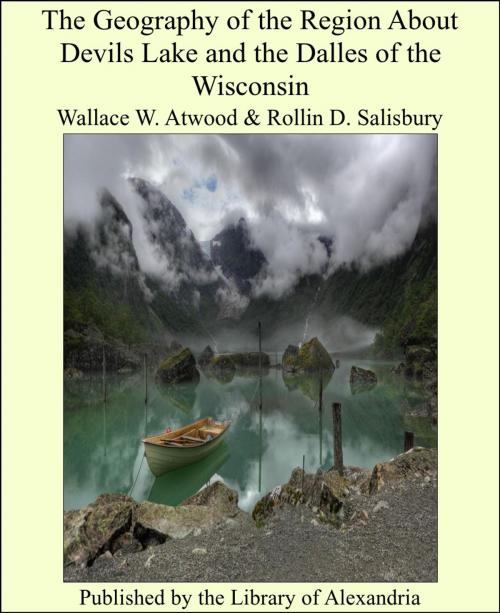The Geography of the Region About Devils Lake and the Dalles of the Wisconsin
Nonfiction, Religion & Spirituality, New Age, History, Fiction & Literature| Author: | Wallace W. Atwood | ISBN: | 9781465514394 |
| Publisher: | Library of Alexandria | Publication: | March 8, 2015 |
| Imprint: | Language: | English |
| Author: | Wallace W. Atwood |
| ISBN: | 9781465514394 |
| Publisher: | Library of Alexandria |
| Publication: | March 8, 2015 |
| Imprint: | |
| Language: | English |
THE TOPOGRAPHY.WITH SOME NOTES ON THE SURFACE GEOLOGY. GENERAL GEOGRAPHIC FEATURES. This report has to do with the physical geography of the area in south central Wisconsin, shown on the accompanying sketch map, Plate I. The region is of especial interest, both because of its striking scenery, and because it illustrates clearly many of the principles involved in the evolution of the geography of land surfaces. Generally speaking, the region is an undulating plain, above which rise a few notable elevations, chief among which are the Baraboo quartzite ranges, marked by diagonal lines on Plates I and II . These elevations have often been described as two ranges. The South or main range lies three miles south of Baraboo, while the North or lesser range, which is far from continuous, lies just north of the city. The main range has a general east-west trend, and rises with bold and sometimes precipitous slopes 500 to 800 feet above its surroundings. A deep gap three or four miles south of Baraboo (Plates II, V, and XXXVII) divides the main range into an eastern and a western portion, known respectively as the East and West bluffs or ranges. In the bottom of the gap lies Devil's lake (i, Plate II and Plate XXXVII), perhaps the most striking body of water of its size in the state, if not in the whole northern interior. A general notion of the topography of a small area in the immediate vicinity of the lake may be obtained from Plate XXXVII
THE TOPOGRAPHY.WITH SOME NOTES ON THE SURFACE GEOLOGY. GENERAL GEOGRAPHIC FEATURES. This report has to do with the physical geography of the area in south central Wisconsin, shown on the accompanying sketch map, Plate I. The region is of especial interest, both because of its striking scenery, and because it illustrates clearly many of the principles involved in the evolution of the geography of land surfaces. Generally speaking, the region is an undulating plain, above which rise a few notable elevations, chief among which are the Baraboo quartzite ranges, marked by diagonal lines on Plates I and II . These elevations have often been described as two ranges. The South or main range lies three miles south of Baraboo, while the North or lesser range, which is far from continuous, lies just north of the city. The main range has a general east-west trend, and rises with bold and sometimes precipitous slopes 500 to 800 feet above its surroundings. A deep gap three or four miles south of Baraboo (Plates II, V, and XXXVII) divides the main range into an eastern and a western portion, known respectively as the East and West bluffs or ranges. In the bottom of the gap lies Devil's lake (i, Plate II and Plate XXXVII), perhaps the most striking body of water of its size in the state, if not in the whole northern interior. A general notion of the topography of a small area in the immediate vicinity of the lake may be obtained from Plate XXXVII















